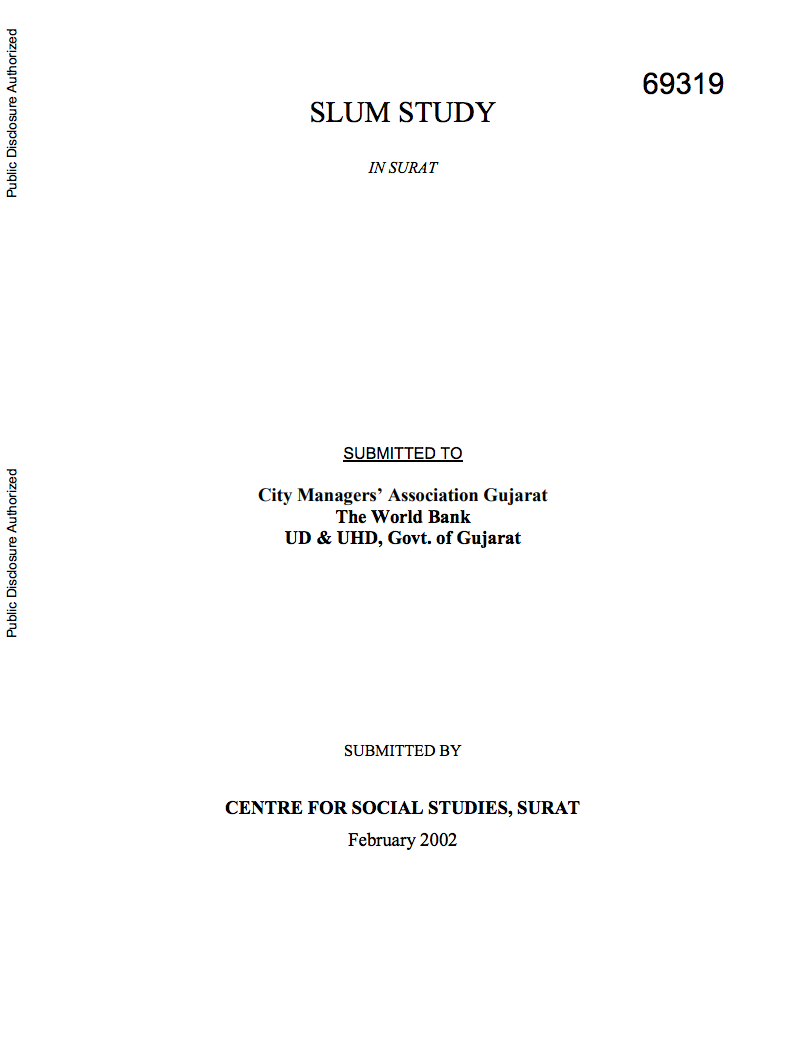Slum Study in Surat
This report discusses the study of slums
in the city of Surat and it is divided into eight sections.
Section one introduces the study and discusses general
background, overall methodology, methods and techniques of
data collection, and methods of analysis; section two
profiles the city of Surat and slums therein; section three
discusses definition and recognition of slums and situation
of tenure of land along with the physical and social


